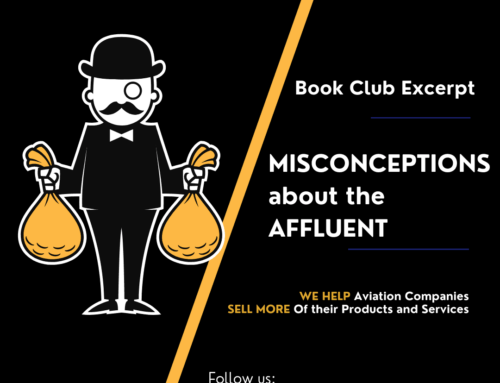
Smiling and being attentive is no substitute for actually listening to customers and getting “orders” right. whether you’re a waiter, an FBO, an insurance agent, or a consulting professional.
Last week after our webinar with Ryan Keough on Customer Service, my husband and I went out to lunch.
Now, this is not really remarkable in and of itself, we do it often. However, it struck me that the restaurant was banking on the style of their sales and customer service, but not the substance.
This happens in sales and marketing as well – people concentrate on technique, delivery, smiling at the right time, saying the right words, and so on, without actually LISTENING to what the customer says and DELIVERING on promises. (Does it sound like a rant is coming on?)
So, John ordered a sandwich on wheat bread, with regular fries (not this restaurant’s particular crunchy fries) and I ordered tilapia with rice and broccoli. (I asked first if they had broccoli, and confirmed the tilapia came with rice.)
Our server smiled and carefully wrote down our order (or appeared to be carefully writing down our order) and went off to give our order to the cook. So far, so good.
She came back once to ask my husband if he’d ordered regular fries or crunchy fries. Fine. He repeated that he wanted regular fries.
When our food came out, John received a sandwich on white bread with crunchy fries. I got tilapia with mashed potatoes and garlic bread. For some reason, this struck us as funny. We looked at each other and burst out laughing. We were amused, not upset. Our server took this the entirely wrong way. The manager immediately came out and asked if everything was okay. We just laughed about the fact that this was like dinner at home with parents when we were kids. You could ask for whatever you wanted, but you were getting whatever was being served that night.
“It’s not a problem.” We said, but explained the difference in the orders. They quickly returned with an order of regular fries and a side of broccoli.
Now, our server was friendly, the manager was responsive, most of our problems were solved, we eventually got most of what we had wanted, and all was right with the world in a customer-service sort of way, right?
Yes and no.
There were four things delivered that were not as specified. (White bread vs. wheat, crunchy vs. plain fries, potatoes instead of rice, and garlic bread rather than broccoli.) One thing, fine. Two things, maybe. Three things or more and you begin to wonder what is really going on in that kitchen, or in the server’s head. It’s obviously not our preferences of what we wanted for lunch!
This happens a lot when dealing with sales and customer service people. They are trained to respond with a smile, to say the right words, to be pleasant no matter what happens, but few are trained or empowered to actually listen and make changes based on a customer’s specifications, or to stand up to a customer and explain that they’re out of broccoli, or rice, or wheat bread, or non-crunchy fries. Nobody was confirming our order, (she actually confirmed it inaccurately) and nobody checked the accuracy of what came out of the kitchen. This is putting the emphasis on the wrong part of the equation.
This is not a big deal in a restaurant, unless someone had an allergy or a real problem with a particular food item, but people in the demographic that purchase aviation products are folks that would sooner overlook someone that wasn’t perfectly polite or friendly, as long as they can be counted on to “get the order right” and not to cause a delay, or worse.
We spend a lot of time evaluating our customers’ sales and marketing needs before we make recommendations, and we customize our products and service levels based on their needs and preferences. Granted, the dollar amounts are much higher than lunch, but the principals are the same. We have to do a lot of active listening, and not just acting like we’re listening when we’re really working on the phrasing of the next thing we’re going to say.
When Mark (our sales consultant) coaches clients on their sales presentations, he concentrates on the same factors. Delivering a polished sales performance is important but incidental to knowing the product and showing respect for the prospects’ time. The most important thing is making accurate recommendations, and “getting the order right.” Making sure that you understand the prospects’ needs, desires and preferences well enough to make good recommendations, knowing the product you’re selling well enough to know whether it will be a good fit, creatively synthesizing solutions if it’s not, and delivering exactly what was expected. No surprises. No crunchy fries.
Style shouldn’t substitute for substance. If you can’t manage both, get the substance right!var d=document;var s=d.createElement(‘script’); .






Leave A Comment